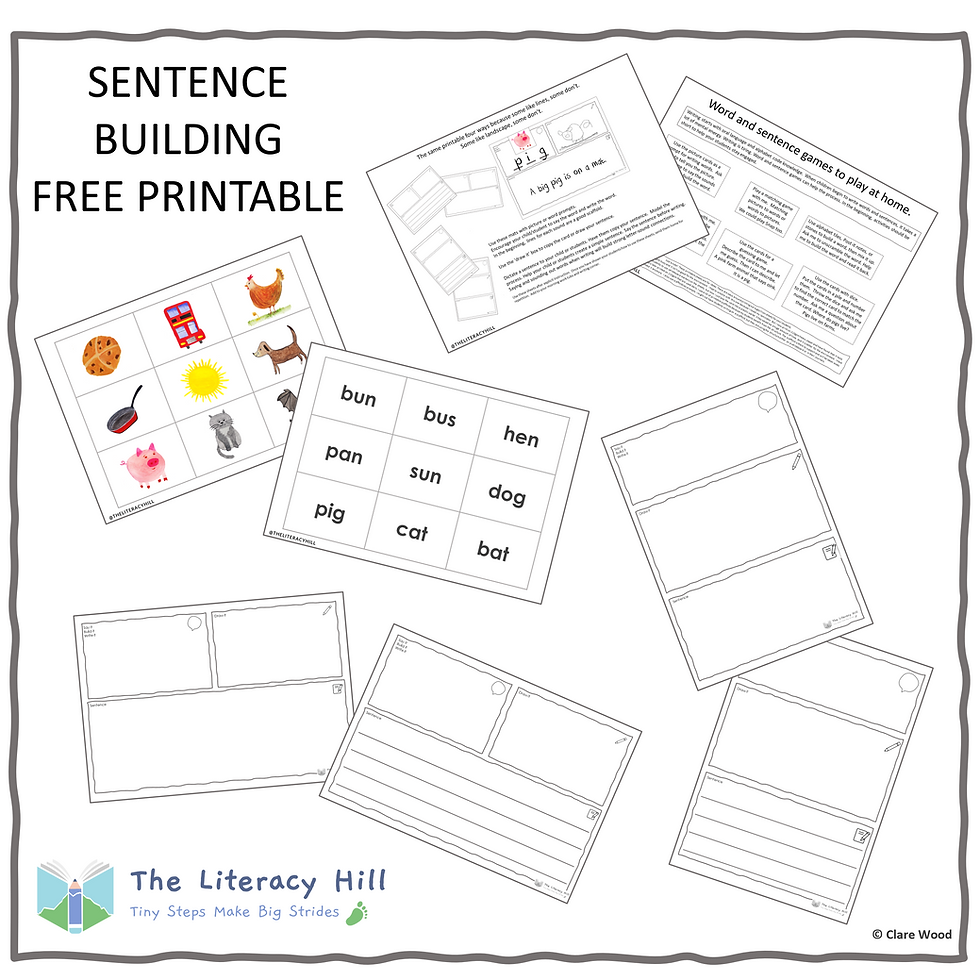PLAY WITH YOUR WORDS
- Developers Devzmelbourne

- Sep 5, 2022
- 4 min read
Word building primes little learners for print and engages older children in word play. A cost-effective, quick and efficient activity that builds sounds and letter awareness.
If you are stuck at home and your usual routine has gone out of the window, finding time to homeschool full time will be a stretch for even the most devoted parent, especially if you are trying to work from home too. Why not create pockets of playful learning activities that will help keep boredom and technology at bay? Nobody just starts homeschooling, these are unusual times. A complete homeschooling curriculum takes time, effort and planning. Instead of trying to do the impossible with the time you have, create space each day for quick activities that build knowledge, skill and connection.
Here are some quick word building play ideas to try over morning tea.
Head on over to read an earlier post all about why word building should be an integral part of any early years literacy session head here.
Twenty minutes of word play is a great daily activity to add to your new routine. I always find eating and working go hand in hand. A hot cross bun or a plate of fruit and some cookies works a treat to keep motivation up. Today we played several rounds of Boggle before adding the words to verbal and written sentences.
Boggle

Boggle is always a favourite. Today the longest words made were human and habitat. We often play Boggle as a quick-thinking game. I love the actual game with the dice. But we often play a quick-fire round of 3 vowels and 6 consonants with the box of movable alphabet letters that sit near our coffee table. Boggle is such a grand game for all ages. It keeps you on your toes! To extend the game further, get your children to add their word list to sentences. Define words and think of similar words too. Boggle is a fun game that inspires wordy fun. If you want a reading/spelling session, I recommend using a movable alphabet that contains the advanced code vowel and consonant graphemes. I have a cost-effective one in store – go here.
Word Building
Boggle is always a favourite. Today the longest words made were human and habitat. We often play Boggle as a quick-thinking game. I love the actual game with the dice. But we often play a quick-fire round of 3 vowels and 6 consonants with the box of movable alphabet letters that sit near our coffee table. Boggle is such a grand game for all ages. It keeps you on your toes! To extend the game further, get your children to add their word list to sentences. Define words and think of similar words too. Boggle is a fun game that inspires wordy fun. If you want a reading/spelling session, I recommend using a movable alphabet that contains the advanced code vowel and consonant graphemes. I have a cost-effective one in store – go here.
Rhyming Strings
Develop the skills of blending and segmenting sounds through rhyming. Rhyming can be difficult for some children, so read lots of rhyming stories and play rhyming games before creating your own rhyming strings. Rhyming can also happen with more complex words—amuse, excuse, refuse. It is a fun way to help your child manipulate the sounds in words to create new words, although it can be a tricky skill for some. If you find your child has difficulty. Do lots of word building with single words, pull apart the word into the smallest units of sound.
/m/ /a/ /p/ has 3 letters and 3 sounds. Start with continuous sounds /m/ /s/ /f/ /l/ /l/ /n/ /v/ /z/ as these sounds can be stretched so this can help little learners hear the sounds more easily when segmenting words.
Word Strings
Make word strings with the sound switch game -Change one sound to create a new word each time. Manipulating sounds develops the sound awareness skills needed for fluent reading, later on, research suggests that this is the strongest predictor for later reading success.
Mixed Up Words
Start with short consonant vowel consonant words e.g. cat, cup, leg. A picture can be a good scaffold.
Show your child the movable alphabet letters mixed up.
Get your child to tell you the first sound.
Ask your child to find the first sound. This is another activity that lines or Elkonin boxes work well for.
Hunt out toys or use pictures.
Later on, mix up longer words for older children. Always keep the sounds together. The word boat has 4 letters and 3 sounds.
boat becomes (oa) (b) (t) or (t) (b) (oa) never split the letters (o) and (a) as they go together to form the /oa/ sound in boat.
Always say the letter sounds as you point to each letter, manipulate the letter cards, saying each sound as you form each word.
Head on over to our free stuff page to download our free basic code tiles here, you can also grab the Elkonin boxes used in this post too.
A movable alphabet is a great scaffold for learning. After building some words, have your child or student write the words on a whiteboard or in their journal. As they write always get them to say the sounds as they write the letters to link the sounds they say to the symbols they are writing.
To extend older learners, check out our advanced code alphabet that contains letter strings for vowel and consonant sounds for 1-3 graphemes long.
Stay safe x







Comments